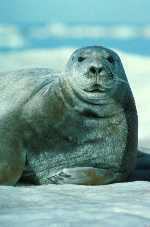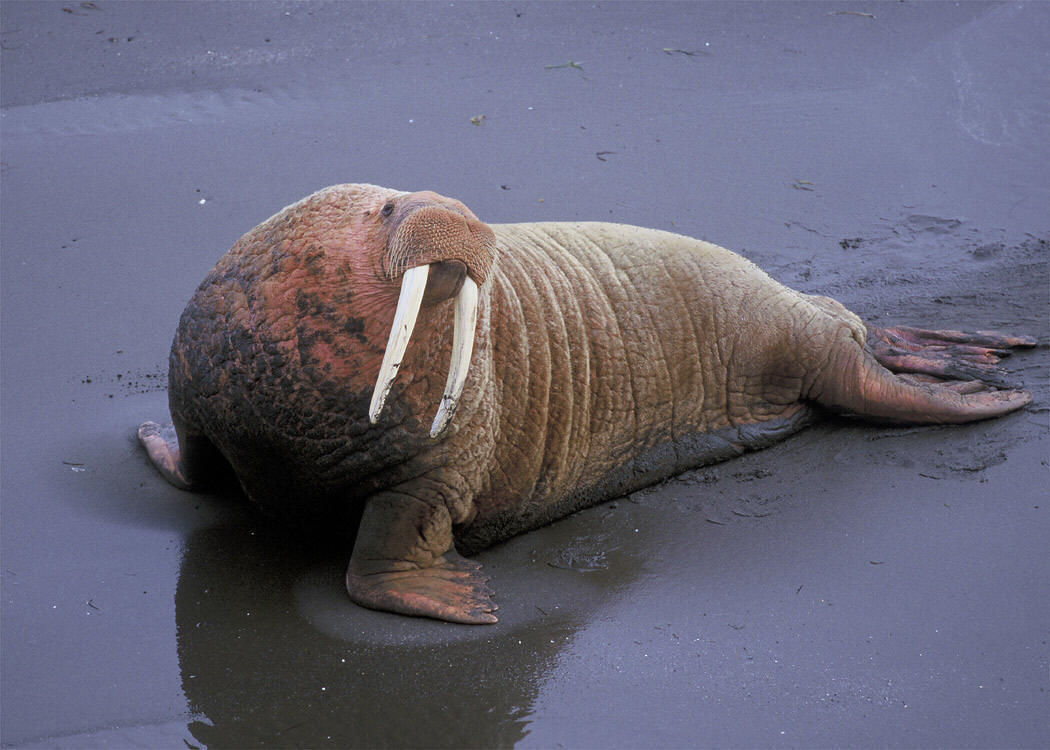|
|
|
|
|
Polar bears are carnivores and get most of their nutrition from some type of meat. Polar bears mainly prey on ringed seals and occasionally on some bearded seals (Ruff and Wilson, 164). The bulk of the polar bear's meal is the skin and fat of the preyed upon animal. They need this extra fat for insulation and to keep warm during the cold winter months. The remaining meat does not go to waste; it becomes an important food source for other arctic animals. Aside from the ringed seal and bearded seal, polar bears may also prey upon harp seals, hooded seals, walruses, white whales, narwhals, and sea ducks (Ruff and Wilson, 164). There are three methods the polar bear uses to obtain its food. The polar bear may sit and wait, stalk its prey or dig its prey out of a snow dens. Polar bears are very efficient swimmers and can travel up to 30 miles per hour across the frozen ice (Forsyth, 190). Their speed aids in hunting and allows them to catch their prey more efficiently. When utilizing the first approach, the polar bear sits motionless near the open water and waits for a seal to emerge. Polar bears may stalk seals that have pulled themselves onto land or may move into the water and attack those that are under the water.
As the polar bear swims under the pack ice and makes its way to the open water, it slowly creeps up on the seal. Within a matter of moments the polar bear is able to make his or her move and retrieve its prey. In the spring, during seal breeding season, polar bears act as scavengers on the land-fast pack ice. They use their keen sense of smell to locate ringed seal dens and prey upon the seal pups (Forsyth, 190). Most of the polar bears activity and feeding is done solitarily; however, there has been some evidence of group feeding. More than 40 polar bears were seen scavenging for food near the Churchill garbage dump, on the southern shore of the Hudson Bay (Nowak, 1093). Luckily, the polar bear is at the top of the food chain and does not have any natural predators; U. Maritimus is most threatened by humans and some of the other bears.
|
|
|



.jpg)